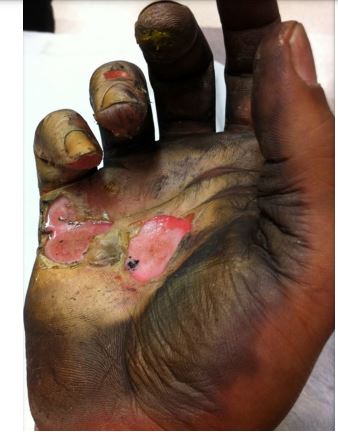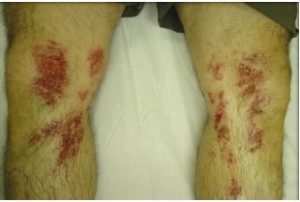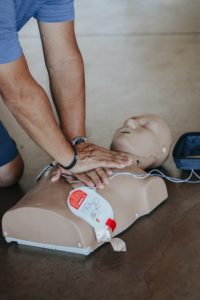
Electrical injuries can be caused by exposure to current from low-voltage and high-voltage sources as well as lightning strikes, and the circumstances of the exposure will dictate management strategies. Human tissues have varying resistance characteristics and susceptibility to damage, so injuries may be thermal, electrical, or mechanical, potentially causing burns, thrombosis, tetany, falls, and blast injury in electrocution. The accident ratio in developing countries- India, Pakistan, etc. is higher than the Developed countries. Most importantly, the mortality rates are also higher in developing countries as the public is unaware of the emergency management of an electrocuted patient and the application of safety measures in the workplace and even at home.
According to the report
Electrocution definition can be, The process of getting electrocuted or electrical injuries or shock is termed as electrocution. According to the report, Each year, approximately 10,000 patients present to United States emergency departments (EDs) with electrical burns or electric shocks,
- Fatalities declined from around 1000 per year in the early 2000s to 565 in 2015
- Likely because of improved occupational protections.
- An estimated 4% of burn Centre admissions are due to electrical burns.
- Most electrical injuries are due to household or occupational exposures

In the United States, between 25 and 50 people die each year from lightning strikes. Electrical injuries can affect every organ system and can cause thermal, electrophysiological, traumatic, and metabolic derangement. Patients may resemble ordinary cardiac, trauma, or burn victims. making recognition challenging, and history is sometimes difficult to obtain. Management of these cases has evolved, especially in recommendations for cardiac monitoring and ear, nose, and throat (ENT) care for pediatric oral electrical burns.
Process of Electrocution
Electricity is the movement of electrons down a gradient, from high to low potential. The current (I), measured in amperes (A), can be thought of as the total amount of electrons moving down the gradient per unit of time.
Voltage (V) is the potential difference between the top and the bottom of the gradient, such as between 2 ends of a wire or the entrance and exit wounds of a patient with an electrical injury.
Resistance (R) is the obstruction of electrical flow by material and is important in electrical injury because current will tend to follow the path of least resistance, providing important clues about underlying injury in particular types of electrical current exposure. Current is directly proportional to voltage and inversely proportional to resistance. Current can be alternating current (AC, switching between positive and negative flow) or direct current (DC, current flowing continuously in 1 direction)
Because most electrical injuries result from grasping an electrical source with the hands, tetany causes the inability to release the contact source and respiratory paralysis may occur if there is sufficient current. Tetany can cause muscular contractions powerful enough to cause orthopedic trauma, and muscle necrosis and longer contact due to tetany mean more tissue damage. Humans can bear AC ranging from 0.2mA to 2 mA.
In the process of electrocution usually two pints; an Entrance Wound and an Exit Wound, appear on the body in the form of burns resulted due to electrocution.
Entrance Wound: High resistance of skin transforms electrical energy into heat, which produces burns around the entrance point
Exit Wound: Current flows through the body from the entrance point, until finally exiting where the body is closest to the ground.
Types of Injuries due to Electrocution
Most of the time patients are unable to provide history, physical clues such as burn can guide them to the 1st aider. It has also been observed that in most of the patients the electrical injury is minima, and morbidity is high caused by secondary effects-fall.
Skin injury

Dry skin tissues of the human body provide more resistance to high voltage and they travel through the deeper structures. Resultantly, it causes deep, extensive burns underneath areas of relatively uninjured skin. Flash burns can be caused by the arcing of high-voltage electrical energy across large areas of the skin. In the process, the direct conversion of electrical energy to thermal energy has severe effects.
Cardiovascular Injury
Patients can have a thermal and electrical injury to the myocardium, causing myocardial infarction, pericardial injury, and heart failure. Case reports of delayed-onset cardiac dysrhythmias have led some emergency clinicians to initiate prolonged cardiac monitoring in patients with an electrical injury, read more on.
Vascular Injury
Blood vessels are highly conductive and are commonly injured by electrical burns, leading to localized vascular injury or thrombosis. Coagulation necrosis and thrombosis in vascular structures cause damage to both the vessel and surrounding tissues. read more on electrocution accident attorney.
Respiratory injury
Respiratory failure secondary to electric shock is usually due to underlying cardiac arrest. There is a higher incidence of spinal cord injury in high-voltage trauma. Depression, chronic pain, anxiety, mood swings, and cognitive difficulty are all common causes of this.
Lightning Strikes

Lightning strikes present differently from other electrical injuries. In this case, Voltage is in the millions, and amperage in the thousands. So total energy transfer due to limited exposure time is also small. In lightning injury, burns are common and can be arc burns, or flash burns to the surface.
However, These skin changes are superficial, do not require treatment, and fade within weeks.
First Aid for Electrocution
The Electric Shock Victims should immediately start their work after calling 911 or 1122/ any emergency service number.
- First of all, Unplug the power source.
- Don’t touch the victim if the power source is intact.
- If you can’t turn off the power, use a piece of dry wood or any nonconducting material to separate the victim from the power source.
- Do not try to move a victim touching a high voltage wire. Call for emergency help.
- Keep the victim lying down.

Note: If the victim is not breathing, apply mouth-to-mouth resuscitation. If the victim has no pulse, begin cardiopulmonary resuscitation (CPR). Then cover the victim with a blanket to maintain body heat, keep the victim’s head low and get medical attention.
Trauma is common in high-voltage injuries resulting from electrocution gif. Cervical spine immobilization is necessary for any patient with a significant injury or a loss of consciousness. Electrical safety training is the need of time for all of us.

Hi, I am John Smit a Captain in Fire Department City of Newyork with over years of experience in the field of Firefighting and HSE. My passion for fire safety started when I was a young boy and witnessed a neighbor’s house go up in flames along with precious lives. Since then, I had dedicated my life to ensuring the safety of buildings, properties, and individuals in case of a fire and medical emergencies.

